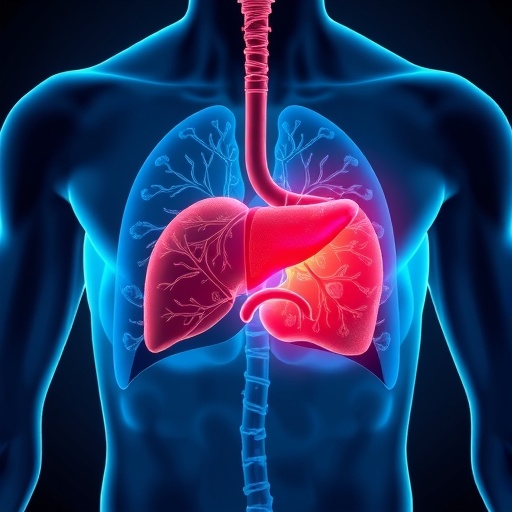Metabolic dysfunction-associated steatotic liver disease, or MASLD, has emerged as one of the most widespread chronic liver conditions globally, impacting over a third of the world’s population. Its prevalence is a significant public health concern due to its intricate link with widespread cardiometabolic risk factors that not only jeopardize liver health but also exert profound effects on cardiovascular and renal systems. MASLD is characterized by the excessive accumulation of fat within liver cells, which, over time, can progress to inflammation, fibrosis, cirrhosis, and even liver failure if left unchecked.
Clinically, MASLD is closely associated with five prominent cardiometabolic conditions: obesity, Type 2 diabetes or pre-diabetes, high blood pressure, elevated blood sugar levels, and low high-density lipoprotein (HDL) cholesterol. These risk factors are collectively recognized as cardiometabolic because they impact the cardiovascular system or disrupt metabolic processes critical for maintaining homeostasis. The intricate interplay of these factors contributes to the pathogenesis of MASLD, complicating disease progression and patient outcomes.
Despite the recognized burden of MASLD, there has been limited investigation into which of these cardiometabolic risk factors most significantly influence mortality rates among affected individuals. Addressing this crucial gap, researchers at Keck Medicine of USC conducted a comprehensive epidemiological study utilizing data from the National Health and Nutrition Examination Survey (NHANES) spanning three decades (1988–2018). This extensive dataset allowed the team to dissect mortality risks linked to individual cardiometabolic variables among more than 21,000 MASLD patients identified within a cohort exceeding 130,000 participants aged 20 years and older.
Their investigation revealed illuminating insights: among the cardiometabolic risk factors studied, three stood out as having the greatest association with increased mortality in MASLD patients. High blood pressure topped the list, followed by pre-diabetes or Type 2 diabetes, and then low HDL cholesterol levels. Specifically, high blood pressure elevated the risk of death by approximately 40%, pre-diabetes and Type 2 diabetes by 25%, and low HDL cholesterol by 15%. These associations held true irrespective of patients’ gender, sex, race, or ethnicity, underscoring the universal impact of these factors.
The prominence of hypertension as the most lethal cardiometabolic factor in MASLD challenges prevailing clinical assumptions. Prior to this study, Type 2 diabetes was often perceived as the predominant driver of mortality risk in liver disease patients. Matthew Dukewich, MD, PharmD, MS, a transplant hepatology fellow at USC and the study’s lead author, highlighted this paradigm shift: “This finding disrupts conventional thinking and suggests clinicians might need to re-evaluate how aggressively they manage blood pressure in the MASLD population.”
Additionally, obesity, despite being the most commonly observed risk factor in MASLD patients, demonstrated a nuanced relationship with mortality risk. The study’s analysis utilized body mass index (BMI) as an indicator of relative adiposity. Results indicated a positive correlation between BMI and mortality, with heavier patients facing higher risks of death. This gradient effect suggests a dose-dependent influence of obesity on disease progression and survival outcomes.
Importantly, the investigation also quantified the cumulative impact of multiple cardiometabolic risk factors on MASLD mortality. The presence of additional factors compounded mortality risk, with each extra cardiometabolic condition increasing the hazard of death by 15%. This cumulative risk underscores the multifactorial nature of MASLD and highlights the necessity for multifaceted therapeutic strategies aimed at comprehensive cardiometabolic control rather than isolated risk reduction.
Methodologically, the study benefited from the robustness of NHANES, a highly representative survey that integrates detailed health metrics, laboratory analyses, and long-term mortality data. By leveraging this rich resource, researchers could control for a wide spectrum of confounding factors and ensure broad generalizability of the findings across diverse U.S. populations. The longitudinal design further enabled evaluation of long-term outcomes linked to baseline cardiometabolic profiles.
Looking forward, the authors advocate for expanded research to deepen understanding of MASLD pathophysiology and its interrelations with genetic predispositions, lifestyle variables such as diet, and alcohol consumption patterns. They emphasize that unraveling these complex interactions could facilitate the development of precision medicine approaches, enabling clinicians to stratify patients based on risk profiles and tailor interventions accordingly.
Norah A. Terrault, MD, senior author of the study and hepatologist at Keck Medicine, reiterated the clinical import: “MASLD is a heterogenous, multifaceted disease. Identifying which cardiometabolic factors drive the highest mortality risk allows us to focus clinical efforts on modifiable targets, potentially improving patient prognosis substantially.” Her remarks underscore the translational potential of this epidemiological work in shaping future standards of care.
This study, published in Clinical Gastroenterology and Hepatology, marks a significant advance in MASLD research by clarifying the relative lethality of cardiometabolic complications within this patient group. It offers novel insights that challenge existing dogma about diabetes dominance in this space, drawing necessary attention to hypertension and cholesterol abnormalities. As MASLD prevalence continues to escalate in tandem with rising rates of obesity and metabolic syndrome worldwide, these findings bear critical implications for public health strategies, clinical management, and resource prioritization.
Ultimately, the study’s evidence advocates for an integrated approach to MASLD treatment—one that rigorously addresses blood pressure control, diabetes management, lipid optimization, and weight regulation simultaneously. By doing so, clinicians may arrest disease progression, reduce comorbid burden, and improve survival outcomes in this increasingly common and challenging chronic liver disease.
Subject of Research: Metabolic dysfunction-associated steatotic liver disease (MASLD) and its cardiometabolic risk factors linked to mortality.
Article Title: Not provided explicitly in the content.
News Publication Date: Not specified in the content.
Web References:
- Study DOI: 10.1016/j.cgh.2025.09.003
- Keck Medicine of USC Liver Health Center: https://www.keckmedicine.org/centers-and-programs/usc-liver-health-center/
- Norah A. Terrault profile: https://www.keckmedicine.org/provider/norah-anne-terrault/
- Keck Medicine news boilerplate: https://news.keckmedicine.org/boilerplates
References: Study published in Clinical Gastroenterology and Hepatology (DOI as above).
Image Credits: Ricardo Carrasco III
Keywords: Liver, Metabolic syndrome, Metabolic disorders




